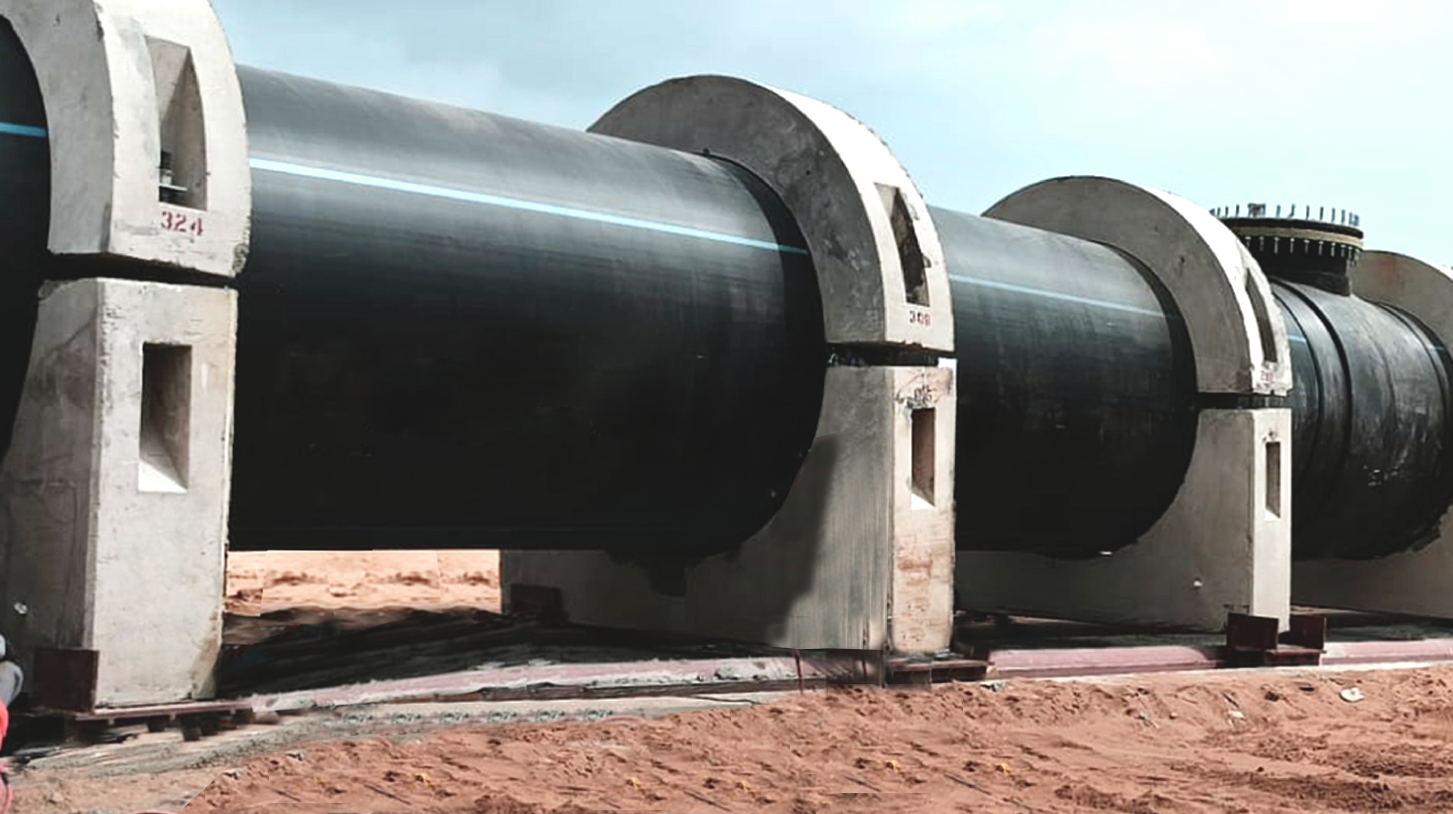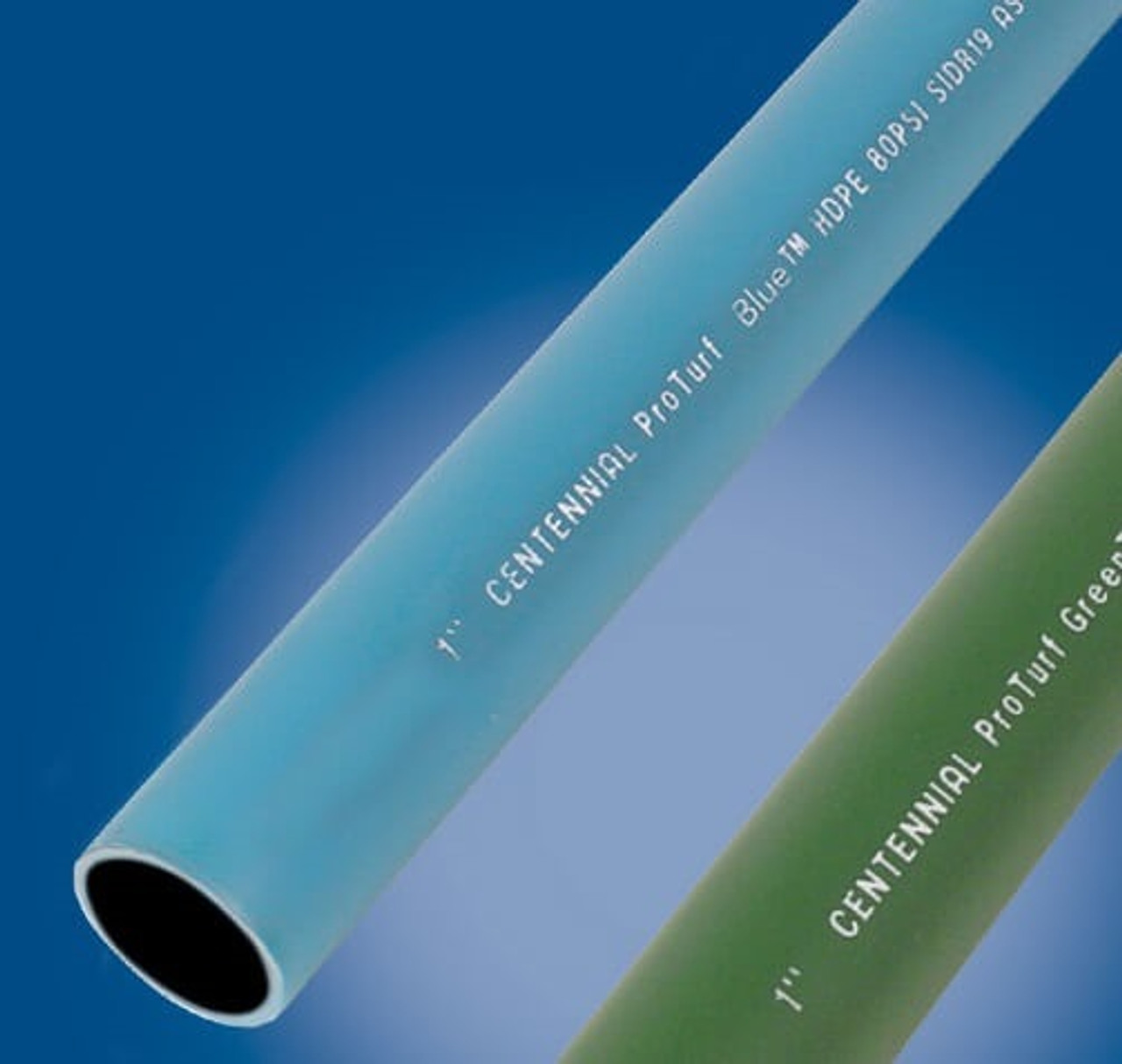American Plastics HDPE Pipe for Oilfield: Built for Harsh Conditions
Explore the Manufacturing Process Behind High-Quality HDPE Pipeline and Its Applications
The production process of top quality HDPE pipes is intricate and systematic. It starts with the choice of raw materials that improve efficiency. Following this, ethylene undertakes polymerization to develop material, which is after that formed via extrusion. Quality assurance is extremely important, ensuring that the end product satisfies rigorous criteria. Nonetheless, the trip of HDPE pipes doesn't finish with production. Their applications across various sectors expose a wider value worth examining.
Understanding HDPE: Features and Advantages

High-density polyethylene (HDPE) is a versatile polycarbonate recognized for its sturdiness and resistance to various ecological factors. This product shows excellent tensile stamina, making it appropriate for requiring applications. Its low-density structure adds to a light-weight product, assisting in simplicity of managing and installation. HDPE additionally showcases remarkable resistance to chemicals, which lessens deterioration when exposed to extreme substances.
The product's low wetness absorption further boosts its longevity, making it optimal for use in pipes and storage space containers. Additionally, HDPE is resistant to ultraviolet (UV) radiation, ensuring that products preserve their integrity even when exposed to sunlight. Moreover, its flexibility allows for the production of intricate forms without endangering stamina. The green nature of HDPE, frequently stemmed from recycled products, adds to its allure, promoting lasting methods in production. On the whole, these buildings and benefits make HDPE a favored selection for different industrial and consumer applications.
Resources Option for HDPE Production
The option of basic materials for HDPE manufacturing is necessary to confirm the end product satisfies the desired specifications and top quality criteria. High-density polyethylene (HDPE) is largely generated from polymerized ethylene, derived from nonrenewable fuel sources such as all-natural gas or petroleum. The quality of these feedstocks considerably affects the mechanical and thermal buildings of the last HDPE.
Ingredients likewise play a substantial function in enhancing HDPE's efficiency, including antioxidants, UV stabilizers, and colorants, which boost durability and resistance to ecological elements. The choice process have to consider not just the chemical make-up of the raw materials yet additionally their handling characteristics to guarantee efficient production.
Furthermore, the sourcing of basic materials need to focus on sustainability and conformity with environmental guidelines, as accountable techniques are essential in today's market. Inevitably, careful raw product selection lays the structure for creating premium HDPE pipes suitable for diverse applications.
The Extrusion Refine: Forming HDPE Pipeline
The extrusion procedure plays an essential duty in shaping HDPE pipelines, beginning with thorough product preparation strategies that guarantee excellent flow and uniformity. Similarly important is the layout of the die, which straight affects the final measurements and surface area high quality of the pipe. Together, these aspects contribute substantially to the efficiency and top quality of HDPE pipeline production.
Product Prep Work Methods
Effective production of HDPE pipes starts with careful product prep work methods, particularly the extrusion procedure. Throughout this stage, high-density polyethylene resin is initial dried to remove moisture, ensuring excellent circulation attributes. The material is then fed into the extruder, where it undergoes home heating and melting, changing into a viscous state. This home heating process is thoroughly regulated to maintain the material's integrity and efficiency. The liquified HDPE is required with a die, shaping it right into a continuous pipe form. Appropriate temperature level monitoring during extrusion is necessary, as it straight impacts the product's buildings and the last item high quality. When shaped, the HDPE pipe is cooled down and cut to specified sizes, prepared for succeeding processing and applications.
Die Design Importance
Accuracy in die design plays an essential function in the extrusion process of HDPE pipelines. The die acts as the last shaping device, straight influencing the pipeline's dimensions, wall thickness, and surface area finish. A well-designed die warranties uniform material circulation, lowering issues such as irregularities and weak places. The geometry of the die should be enhanced to suit the particular residential properties of HDPE, including its viscosity and thermal habits throughout extrusion. Additionally, the cooling price of the product as it goes through the die can substantially affect the pipe's architectural integrity. Subsequently, spending in innovative die technology is essential for producers aiming to produce high-grade HDPE pipelines that meet industry criteria and client expectations.
Quality Assurance Measures in HDPE Production
Although different factors influence the high quality of HDPE pipe manufacturing, reliable quality assurance actions are important to assure consistency review and integrity in the last product. Key top quality control methods consist of strenuous material assessment, confirming that the raw polyethylene meets recognized requirements for purity and density. During the extrusion process, specifications such as temperature, pressure, and cooling time are very closely monitored to maintain dimensional precision and architectural integrity
Additionally, post-production screening is vital; makers often perform hydrostatic examinations to assess the pipe's stamina and resistance to pressure. Visual evaluations for surface area flaws better boost quality assurance. Qualification from pertinent requirements companies, like ASTM or ISO, supplies an additional layer of credibility. By implementing these complete top quality control measures, makers can decrease issues, enhance performance, and make sure that the HDPE pipelines meet the details requirements of numerous applications, inevitably bring about client satisfaction and count on the item.
Applications of HDPE Pipeline Throughout Industries
HDPE pipes are utilized across numerous sectors due to their resilience and flexibility. In water distribution systems, they ensure effective shipment, while in wastewater administration, they offer reputable services for waste transport. Furthermore, agricultural irrigation networks benefit from HDPE's resistance to rust and versatility, making it a suitable option for modern-day farming methods.

Water Distribution Solutions
A substantial variety of markets depend on high-density polyethylene (HDPE) pipelines for efficient water circulation systems. Known for their resilience and resistance to deterioration, HDPE pipelines are extensively used in metropolitan supply of water networks, farming irrigation, and industrial applications. Their lightweight nature helps with easy handling and installment, reducing labor costs and time. Additionally, HDPE pipes can suit different stress degrees, making them ideal for both reduced and high-pressure systems. Pipe Supplier American Plastics Midland. The versatility of the material enables smooth combination right into existing framework, lessening the requirement for extensive excavation. Furthermore, HDPE's resistance to chemical seeping guarantees that the water provided remains safe and tidy, making it a suitable selection for maintaining the top quality of safe and clean water across different markets
Wastewater Management Solutions
Efficient water distribution systems likewise lead the way for ingenious wastewater administration services, where high-density polyethylene (HDPE) pipes play a substantial function. Popular for their toughness and resistance to deterioration, HDPE pipes are suitable for water pipe installation moving wastewater in various settings. Their adaptability enables for very easy installment in complex settings, minimizing the demand for extensive excavation. Furthermore, HDPE's smooth interior surface reduces friction, enhancing flow prices and effectiveness. These pipelines are also resistant to chemical leaching, making certain that impurities do not endanger the surrounding atmosphere. Industries, municipalities, and therapy centers increasingly depend on HDPE pipes for their reliability and long life, making them a favored selection for modern-day wastewater administration systems. This flexibility underscores the important relevance of HDPE pipelines across countless applications.
Agricultural Irrigation Networks
Agricultural irrigation networks benefit considerably from making use of high-density polyethylene (HDPE) pipes, which offer reliable and trusted water distribution to crops. HDPE pipelines are lightweight, making them very easy to move and set up, while their versatility permits for different setups in varied surfaces. These pipes show excellent resistance to deterioration, chemicals, and UV radiation, ensuring durability in extreme agricultural settings. Additionally, their smooth indoor surface area lessens friction loss, enhancing water circulation and reducing energy prices connected with pumping. The durability of HDPE pipes, typically exceeding half a century, adds to reduce maintenance and substitute expenses. Farmers increasingly depend on HDPE pipes to enhance irrigation effectiveness and advertise lasting agricultural techniques, eventually leading to improved crop yields and source preservation.

Future Trends in HDPE Pipe Technology
As the need for lasting and reliable infrastructure expands, advancements in HDPE pipe modern technology are positioned to transform numerous markets. Arising trends include the assimilation of wise modern technologies, such as sensing units and IoT capabilities, which facilitate real-time monitoring of pipe problems, reducing maintenance prices and preventing leakages. Additionally, the growth of innovative production techniques, such as 3D printing, is making it possible for the production of facility, customized pipe designs that deal with particular task requirements.
The emphasis on recycling and circular economic situation techniques is driving the technology of HDPE pipelines made from recycled materials, improving sustainability. Boosted jointing methods, such as electro-fusion and mechanical fittings, are likewise improving installation efficiency and reliability. Finally, the expanding focus on ecological guidelines is pushing producers to adopt greener production processes, guaranteeing that HDPE pipes not just meet market standards however additionally cultivate a more sustainable future for framework development.
Regularly Asked Concerns
How Does HDPE Compare to Various Other Plastic Products?
HDPE outperforms lots of various other plastic products relating to durability, chemical resistance, and adaptability. Its reduced thickness and high tensile toughness make it perfect for various applications, frequently exceeding alternatives in both performance and long life.
What Are the Environmental Influences of HDPE Production?
The environmental impacts of HDPE view manufacturing include greenhouse gas exhausts, energy usage, and possible pollution from manufacturing procedures. In addition, incorrect disposal can lead to soil and water contamination, increasing issues concerning long-term environmental impacts.
Can HDPE Pipes Be Reused?
Yes, HDPE pipes can be reused. Many centers accept used HDPE for processing, transforming it right into new items. This recycling adds to sustainability efforts, decreasing plastic waste while conserving resources and power in the manufacturing cycle.
What Is the Life-span of HDPE Pipeline?

Exactly How Do Temperature Variations Affect HDPE Pipe Efficiency?
Temperature variations substantially influence HDPE pipe performance, influencing flexibility and toughness. Heats can cause softening, while low temperature levels might cause brittleness, ultimately affecting the pipeline's toughness and viability for numerous applications in diverse settings.